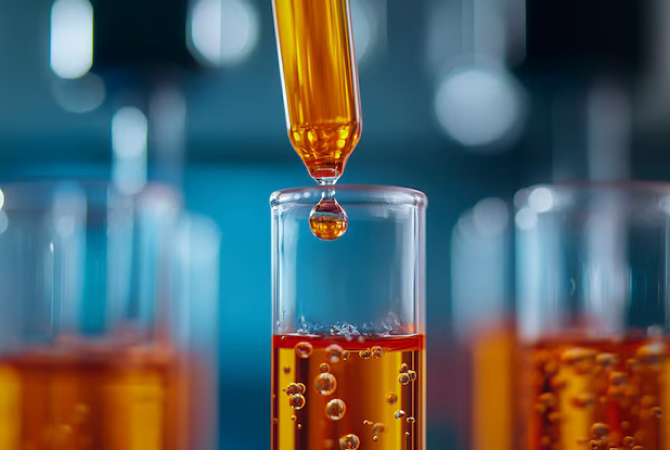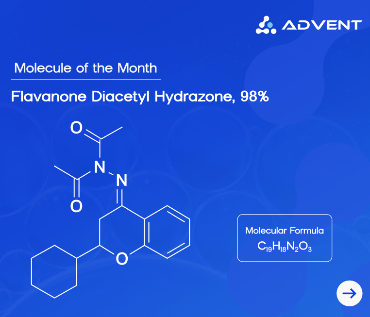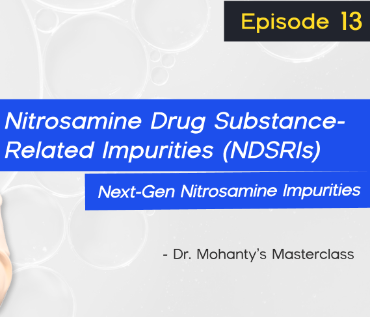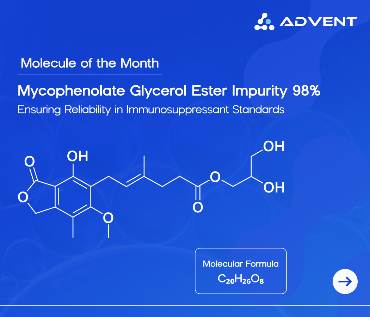The chemical substance hydrochloric acid (HCl), also known as muriatic acid, functions as an intense corrosive acid that serves various industrial, laboratory, and pharmaceutical operational requirements. HCl is naturally present in the human body as gastric acid, facilitating digestive processes. The chemical manufacturing sector, together with metal refining and pH control and cleaning applications, implements hydrochloric acid commercially. Appropriate safety measures and proper handling techniques become necessary because hydrochloric acid exhibits corrosive properties.
In this article, we will discuss hydrochloric acid's characteristics, industrial uses, and the necessary safety measures for handling it. Let us dive in to learn more.
Overview and Properties
Hydrochloric acid is another strong mineral made from hydrogen and chloride ions. It belongs to a group of colourless liquids with a pungent odour that dissolves in water. Hydrochloric acid, with the chemical formula HCl and a molar mass of 36.46 g/mol, finds its application in industries in the regulation of pH, purification of metals, chemical manufacturing, and water treatment sector. In gastric acid, it is helpful in the digestion process in the human body. As a result of its activity and corrosiveness, it requires proper storage, handling and precautionary measures on personal protective equipment while handling it.
Chemical Properties and Composition
Molar Mass: 36.46 g/mol
Structural Formula: HCl (Hydrogen chloride) consists of a hydrogen ion (H⁺) and a chloride ion (Cl⁻). In its gaseous form, it exists as HCl molecules, while in an aqueous solution, it fully ionises into H⁺ and Cl⁻.
Hydrogen Bond Donor Count: 1
Hydrogen Bond Acceptor Count: 1
Reactivity: Strong acid. Reacts vigorously with bases, metals, and carbonates, releasing hydrogen gas or forming salts. It can produce toxic chlorine gas when mixed with strong oxidisers.
Functional Group: Hydrogen halide (-HCl)
Synthesis of HCl
Hydrochloric acid is manufactured in industries using multiple established techniques to suit the production objectives. HCl production occurs through “Oxidation” and “Mannheim process” methods. In the oxidation method, the reaction of H2 hydrogen gas and Cl2 chlorine gas together with catalyst production results in HCl hydrogen chloride gas. The “Mannheim process” starts with sodium chloride (NaCl) combined with sulfuric acid (H2SO4) to produce hydrogen chloride gas (HCl). The process creates HCl gas as a secondary product. Water dissolves the HCl gas to produce hydrochloric acid at different concentration levels.
Role of Hydrochloric Acid in Water Treatment
Hydrochloric acid (HCl) functions fundamentally during water treatment as it controls pH levels and eliminates contaminants while providing neutralising treatment to waste materials. HCl serves industrial and municipal water purification by efficiently dissolving mineral deposits, scales, and pollutants because of its ability to operate as a strong corrosive acid.
Role of Hydrochloric Acid in Other Industry
The industrial sector utilises hydrochloric acid for applications beyond water purification, chemical production, metal purification, and pharmaceutical development. Understanding HCl properties and necessary safety measures enables effective utilisation and safe industrial applications, including water treatment applications. HCl's excessive reactivity and corrosivity necessitate careful handling, proper storage, and protective equipment. As mentioned earlier, hydrochloric acid has numerous industrial uses and has penetrated in the following sectors, among others:
Petroleum Industry: Oil Well acidization: Hydrochloric acid is widely used in oil well acidization and oil and gas production. When injected into wells, it breaks the emulsion of the mineral deposits and sediments that hinder the flow of crude oil. This process helps create more space in the reservoir rocks, enhancing the oil exploitation rate. Therefore, using HCl promotes efficiency in energy production and the functioning of the petroleum industry.
Regeneration of Ion Exchangers in Water-Softening Plants: HCl solution can soften water since it helps regenerate cation exchange resins. These resins can remove hardness-causing materials such as calcium and magnesium in water, lowering their quality. HCl rids the resin of the trapped ions and replaces them with hydrogen or sodium ions, ensuring that the water is purified to fit the desired status for industrial or residential use.
Food and Beverage Industry: In the food industry, hydrochloric acid is applied as an acidulant, a preservative, and an agent that controls the consistency of the food’s acidity level. It also significantly generates high-fructose-containing corn syrup by converting the starch to glucose and fructose. Further, it also stabilises the pH of sauces, canned foods, vegetable juices, and other products and their shelf life.
Swimming Pool Maintenance: Popularly called muriatic acid, HCl is extensively used in swimming pools for pH balancing. The pH should be adequately maintained to enable chlorine to work effectively as a disinfectant and to combat algae formation, water haze, and itch to the swimmers’ skin and eyes. Besides, it assists in controlling calcium deposits, which are prone to harm systems used in pools. Hydrochloric acid is essential in pools because water must always be clean and balanced.
Cleaning Products: Hydrochloric acid is one of the most common components used in most homes and industries for cleaning, but it is diluted. It can eradicate tough stains, limescale, rust and grout on tiles, bathtubs and toilets. Its strong dissolving properties help clean up mineral formations and return the surfaces to their sparkling condition.
Safety, Storage, and Handling of Hydrochloric Acid
Despite the versatility of hydrochloric acid, it does reach a degree of hazard since it contains corrosive properties. If not well handled, they cause severe burns and respiratory problems, as well as cause some damages to different surfaces. Therefore, HCl must be stored in non-reactive amber-colour containers to avoid leakage and other dangerous reactions.
Another precaution that has to be observed in the usage in both the local and the industrial sectors is personal protective gear like gloves, goggles, and protective clothing, among others. Organisations using hydrochloric acid at any of their workplaces must also ensure adequate ventilation and sufficient emergency measures to prevent exposure to the same.
Hydrochloric acid should be stored in tightly sealed containers that are chemically resistant and should be stored at room temperature in dry areas that should be cool and well-ventilated.
Where to Buy Hydrochloric Acid?
Hydrochloric acid (HCl) is a highly versatile chemical used across industries, including pharmaceuticals, water treatment, and chemical manufacturing. As a strong acid, it plays a vital role in pH regulation, metal processing, and laboratory applications.
At Advent, we offer hydrochloric acid in various grades, including AR (Analytical Reagent), LR (Laboratory Reagent), ACS (American Chemical Society), and multiple pharmacopoeia-compliant grades to meet diverse industry standards. We also provide Hydrochloric acid 34-37% (for Trace Metal Analysis). Our products are available in millilitres (mL) and litres (L) quantities, catering to both small-scale and bulk requirements. Each batch is supplied with comprehensive characterisation data, ensuring quality and compliance for pharmaceutical and industrial applications.
The price of hydrochloric acid varies based on grade, concentration, and packaging size. For more details on our fine and speciality chemicals, visit our website today.




